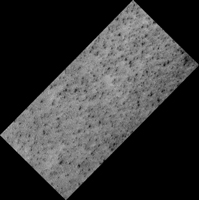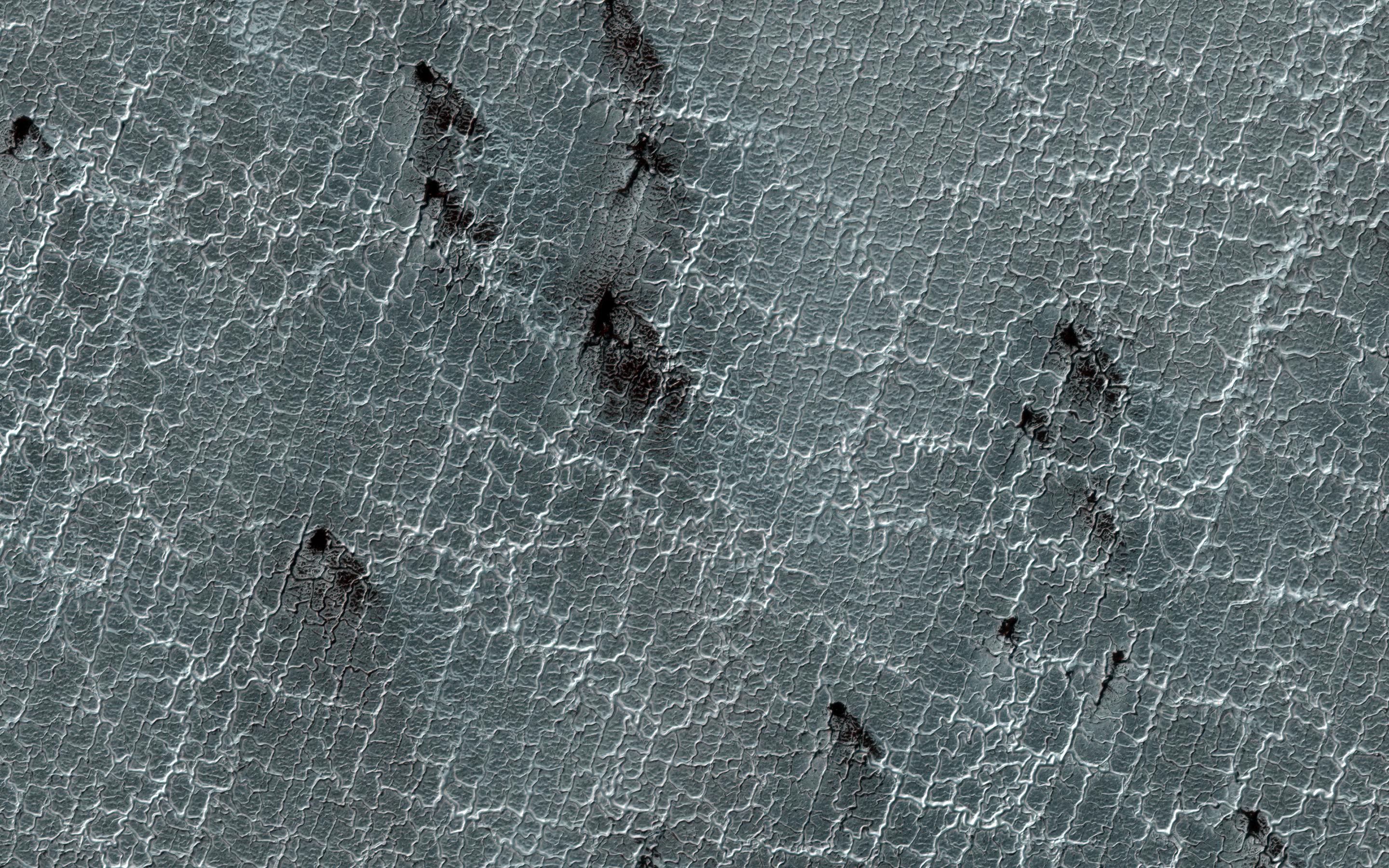The Enduring Charm of Martian Spiders
Caption:

Map Projected Browse Image
Click on image for larger version
Araneiform terrain (colloquially: spider-like terrain) is located in the south polar region of Mars and evolves in appearance over the spring and summer. In the season shown here, the thin bright lines on the surface (the spider legs) are troughs and many of these features have dark fan-shaped markings
emanating from them
.
Our current theory for how these patterns are formed is that during winter a carbon dioxide ice layer develops over the surface. When sun rays strike this surface, this carbon dioxide ice acts in a similar way to our atmosphere: it allows the sun light to penetrate but traps the infrared radiation creating a greenhouse-like effect.
The trapped heat transforms the ice at the bottom of the layer to gas, building up pressure until it bursts through. When that happens, the gas flows out in geyser-like fashion and carries dust with it, which falls back to the surface to form the dark fans.
The map is projected here at a scale of 25 centimeters (9.8 inches) per pixel. [The original image scale is 24.6 centimeters (9.7 inches) per pixel (with 1 x 1 binning); objects on the order of 74 centimeters (29.1 inches) across are resolved.] North is up.
Background Info:
The University of Arizona, Tucson, operates HiRISE, which was built by Ball Aerospace & Technologies Corp., Boulder, Colorado. NASA's Jet Propulsion Laboratory, a division of Caltech in Pasadena, California, manages the Mars Reconnaissance Orbiter Project for NASA's Science Mission Directorate, Washington.
Cataloging Keywords:
| Name |
Value |
Additional Values |
| Target |
Mars |
|
| System |
|
|
| Target Type |
Planet |
|
| Mission |
Mars Reconnaissance Orbiter (MRO) |
|
| Instrument Host |
Mars Reconnaissance Orbiter |
|
| Host Type |
Orbiter |
|
| Instrument |
High Resolution Imaging Science Experiment (HiRISE) |
|
| Detector |
|
|
| Extra Keywords |
Atmosphere, Color, Dust, Infrared, Map |
| Acquisition Date |
|
| Release Date |
2018-12-11 |
| Date in Caption |
|
|
| Image Credit |
NASA/JPL-Caltech/University of Arizona |
| Source |
photojournal.jpl.nasa.gov/catalog/PIA22896 |
| Identifier |
PIA22896 |

 Planetary Data System
Planetary Data System

